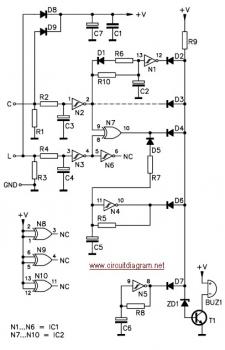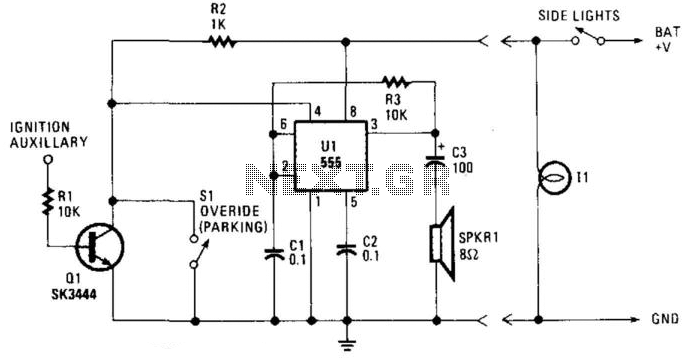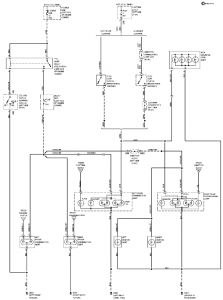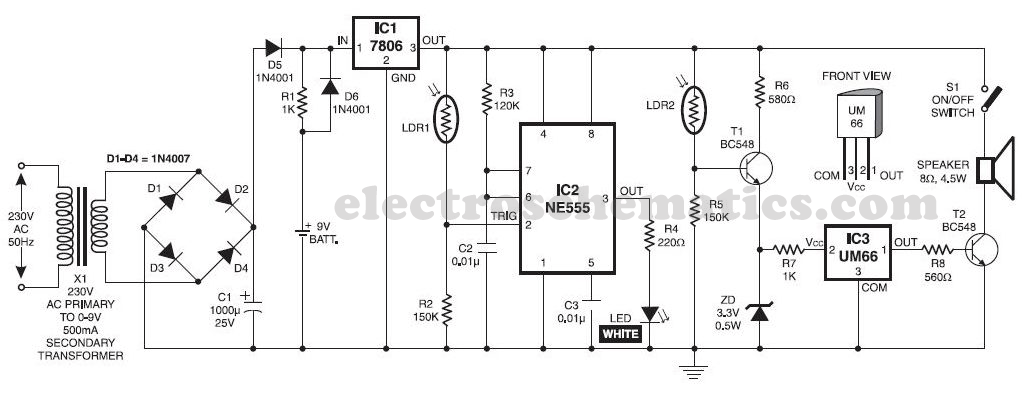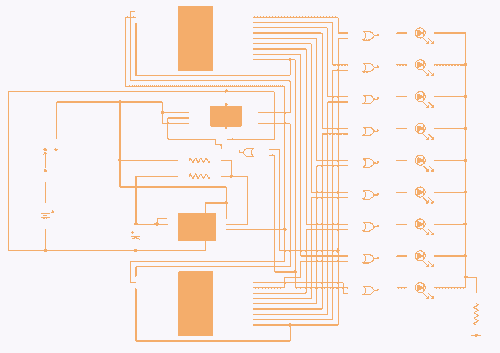
Light Dimmer
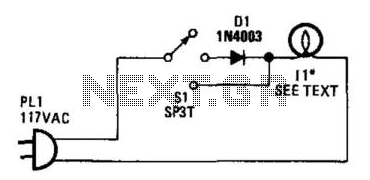
Lamp II is a household lamp. When the switch is in the center position, the lamp operates on half-wave rectified AC; the effective voltage that the lamp receives is reduced, which dims it. Lamp II can accommodate a power rating of up to 200 W and is designed for either 120 V or 240 V operation. Diode D1 should be rated for a peak inverse voltage (PIV) of at least 200 V, or 400 V PIV for operation at 240 V.
Lamp II functions as a versatile lighting solution, utilizing a half-wave rectifier circuit to control the brightness of the lamp. In this configuration, the switch's center position activates the half-wave rectification, allowing only one half of the AC waveform to pass through to the lamp. This results in a reduction of the effective voltage applied to the lamp, thereby dimming the light output.
The lamp is rated for a maximum power of 200 W, allowing it to accommodate a variety of incandescent or LED bulbs, depending on the application. The design supports both 120 V and 240 V AC power supplies, making it suitable for use in different regions with varying electrical standards.
The rectification is achieved using a diode, labeled D1 in the schematic. It is critical that this diode is selected based on the expected peak inverse voltage. For operation at 120 V, a diode with a PIV rating of at least 200 V is sufficient. However, for 240 V operation, it is advisable to use a diode with a PIV rating of 400 V to ensure reliable performance and to prevent breakdown during operation.
In summary, Lamp II provides an effective solution for adjustable lighting through the use of a half-wave rectifier, making it a practical choice for household applications while ensuring safety and compatibility with standard voltage ratings. Proper selection of components, particularly the diode, is essential for optimal functionality and longevity of the lamp circuit. Lamp II is a household lamp. When the switch is in the center position, the lamp is operated on half-wave rectified ac; the ef fective voltage the lamp sees is less, which dims it. II can be a lamp up to 200 W or 50 rated at 120 or 240 V, and D1 should be a 200-V PIV or better diode (400 PIV for 240-V operation).
Lamp II functions as a versatile lighting solution, utilizing a half-wave rectifier circuit to control the brightness of the lamp. In this configuration, the switch's center position activates the half-wave rectification, allowing only one half of the AC waveform to pass through to the lamp. This results in a reduction of the effective voltage applied to the lamp, thereby dimming the light output.
The lamp is rated for a maximum power of 200 W, allowing it to accommodate a variety of incandescent or LED bulbs, depending on the application. The design supports both 120 V and 240 V AC power supplies, making it suitable for use in different regions with varying electrical standards.
The rectification is achieved using a diode, labeled D1 in the schematic. It is critical that this diode is selected based on the expected peak inverse voltage. For operation at 120 V, a diode with a PIV rating of at least 200 V is sufficient. However, for 240 V operation, it is advisable to use a diode with a PIV rating of 400 V to ensure reliable performance and to prevent breakdown during operation.
In summary, Lamp II provides an effective solution for adjustable lighting through the use of a half-wave rectifier, making it a practical choice for household applications while ensuring safety and compatibility with standard voltage ratings. Proper selection of components, particularly the diode, is essential for optimal functionality and longevity of the lamp circuit. Lamp II is a household lamp. When the switch is in the center position, the lamp is operated on half-wave rectified ac; the ef fective voltage the lamp sees is less, which dims it. II can be a lamp up to 200 W or 50 rated at 120 or 240 V, and D1 should be a 200-V PIV or better diode (400 PIV for 240-V operation).
